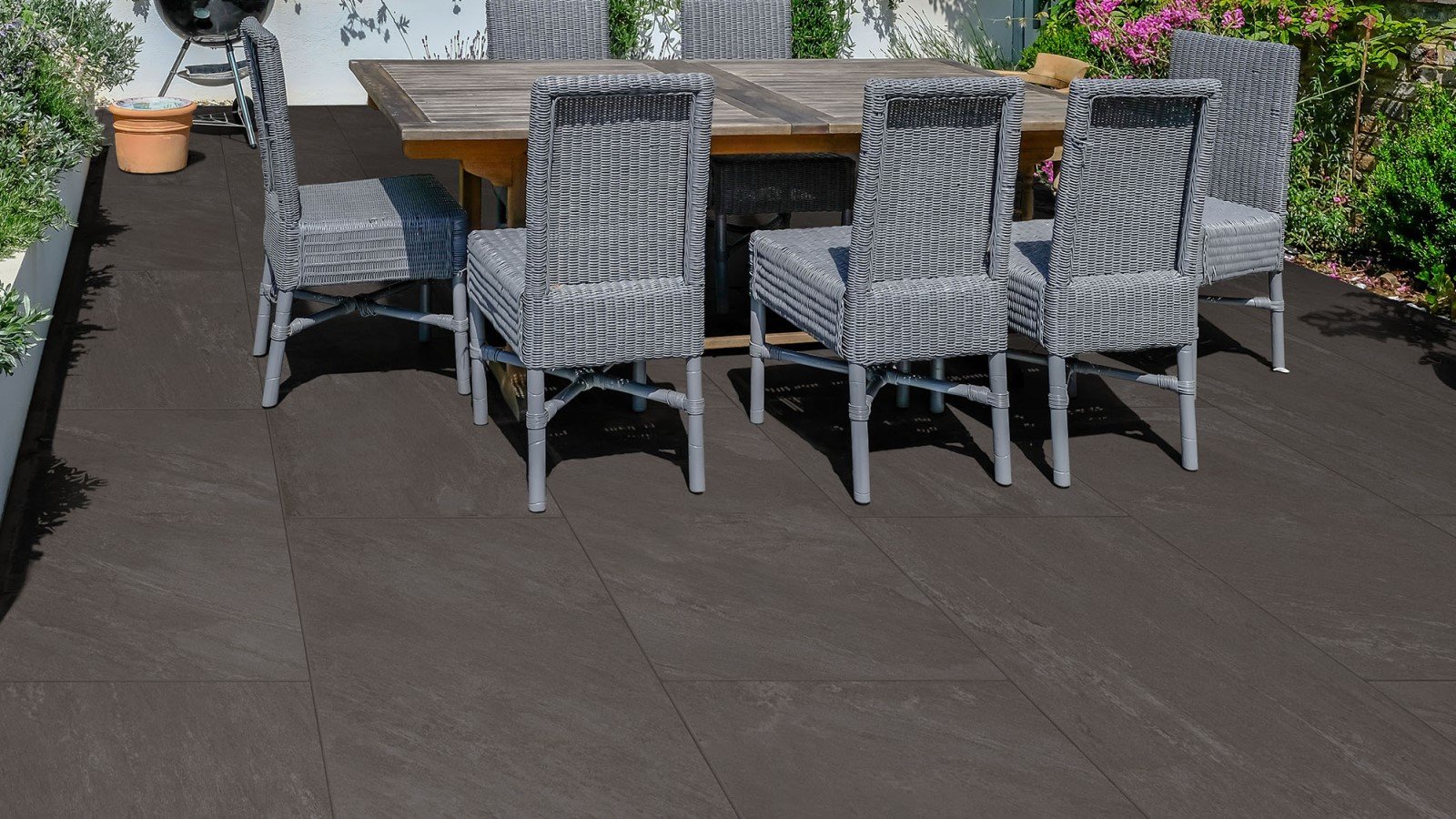While ensuring your kitchen floor tiles have a professional finish is vital (or at least that they pair well with your porcelain paving outside), it’s just as important to consider the safety implications of your flooring choice.
Namely, this means deciphering anti-slip ratings to find the flooring with the highest slip resistance, because why introduce gorgeous tiles when they’re just going to cause problems for you and your guests? But don’t worry, we’re here to explain the seemingly complicated rating systems in simple terms and turn you into a bona fide slip resistance expert.
Take a look, below, for our essential tile slip rating guide.
The sliding scale of anti-slip ratings
As a general rule of thumb, the higher the anti-slip rating, the more slip-resistant properties a flooring tile will possess. R13 porcelain tiles, for example, are more slip-resistant than R12 anti-slip floor tiles, which then offer more slip resistance than R11 porcelain tiles – and so on and so forth.
To find out more about each anti-slip rating and what they are best used for, continue reading, below.
R13 anti-slip rating
The grand-daddy of non-slip tech, an R13 rating is the highest slip resistance rating available on the market today. They are typically reserved for use in wet areas, such as public showers or indoor pool areas.
So, if you’re lucky enough to own a hot tub or have a walk-in shower room, then installing R13 porcelain tiles would minimise the chance of an accident – even when the surface is slick with water.
R12 anti-slip rating
Second highest on the slip-resistance scale, R12 anti-slip floor tiles are more commonly used in residential areas than their R13 rating equivalents.
You will most likely find R12 slip rating tiles around the house in kitchens, bathrooms and hallways; anywhere people might want to opt for the sophisticated stylings of porcelain tiles indoors.
R11 anti-slip rating
An R11 tile slip rating boasts similar slip resistance to R12 floor tiles – the only discernible difference is that R11 tiles are typically the cheaper option.
And here at Simply Paving, we offer three types of R11 porcelain floor tiles that you can use inside your home: Rustic Profiled, Polished Textured and Rustic Textured internal porcelain paving. Each of these R11 porcelain tiles not only offers the suitable slip resistance you need for kitchens and bathrooms, but they also exhibit that all-important ‘X-factor’ that wows guests every time.
You can browse our full collection of R11 porcelain floor tiles over on our internal porcelain page.
R10 anti-slip rating
While on the lower end of the slip resistance scale, R10 slip rating tiles are still functional as a safe flooring option.
However, you should avoid installing R10 anti-slip rating tiles in areas that regularly get wet or need specifically high slip resistance, such as a bathroom. Instead, R10 tiles are best suited to hallways, living rooms and utility rooms, where only occasional spillages may occur.
R9 anti-slip rating
Although many might be tempted by the cheaper price tag, R9 rated tiles possess the lowest slip resistance of any type of indoor flooring.
The trick to using R9 slip rating tiles safely is to install them in areas that are rarely, if ever, exposed to water, such as a hallway or corridor. Even then, however, you should still take precautions by laying down mats and rugs to ensure no guests have any unfortunate accidents.
Now you’re well-versed in the differences between tile slip ratings, the next step is to pick the right non-slip porcelain tiles for the inside of your home. Head over to our internal porcelain page to browse our full collection.










































